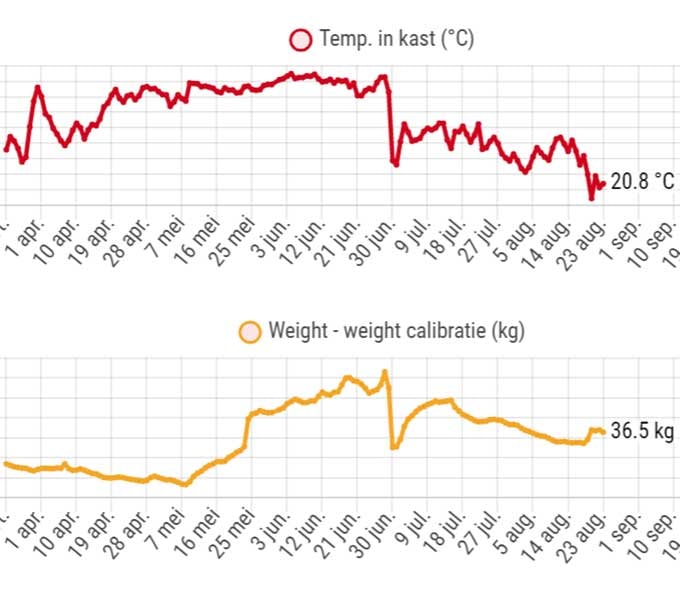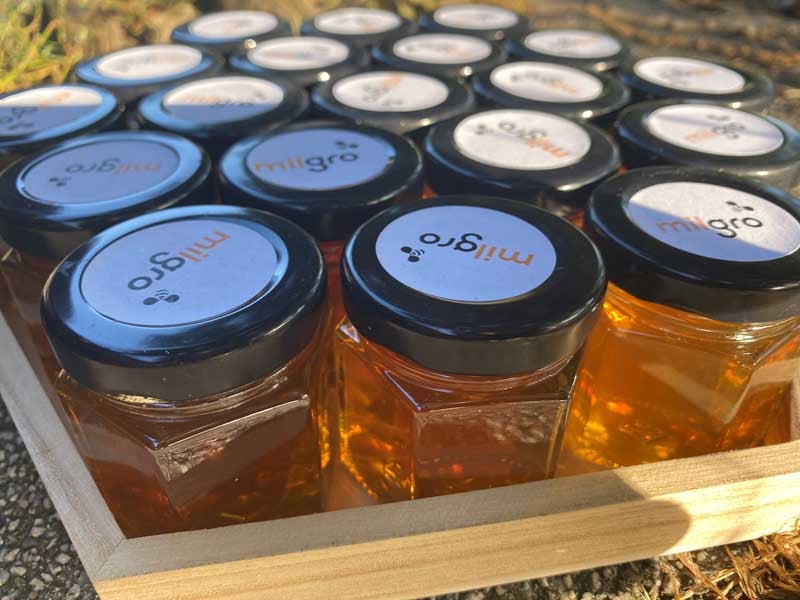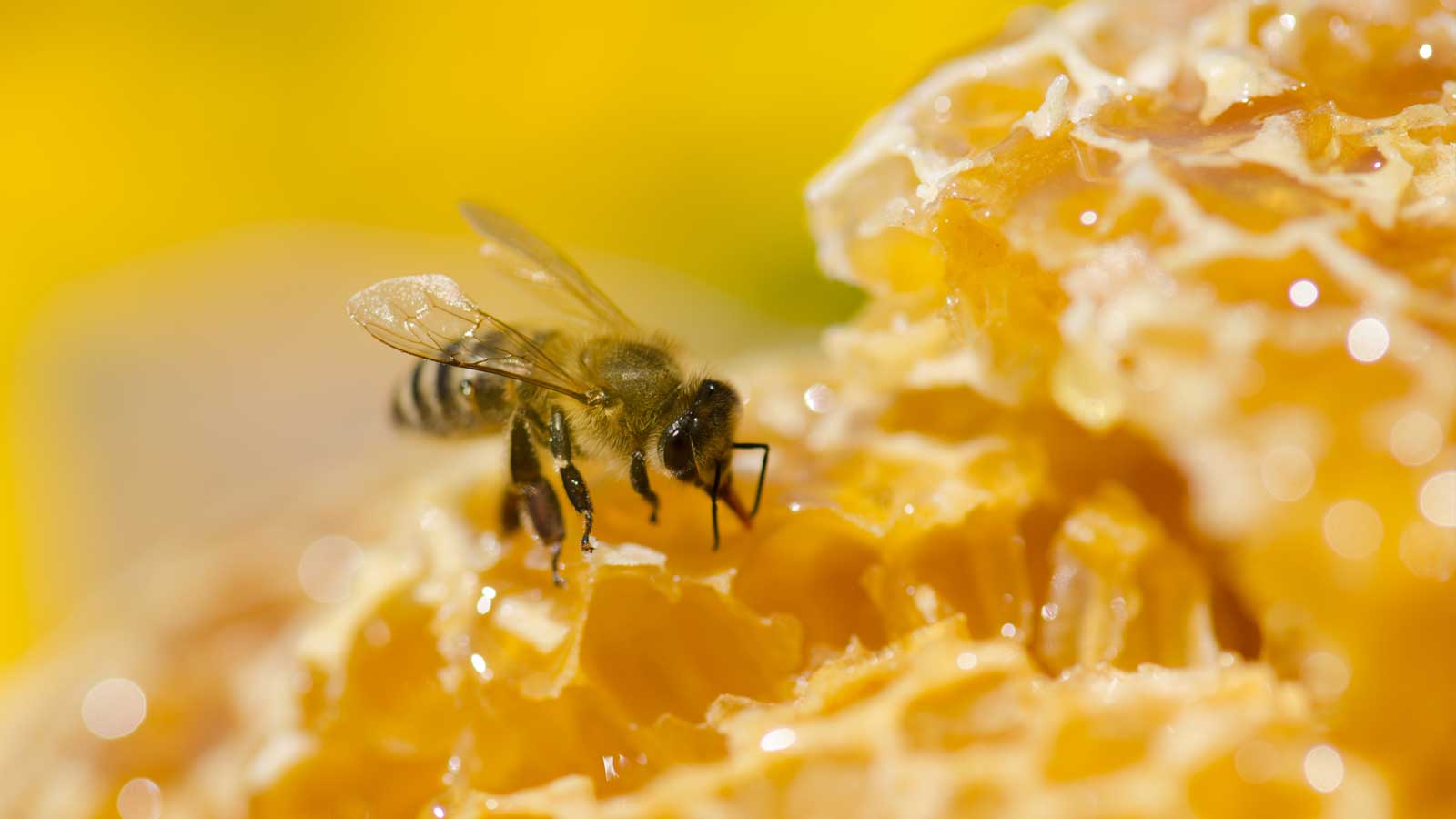Almost a year ago, Milgro started sponsoring its own hive with bee colonies. Milgro feels connected to the bee as a restorer and maintainer of natural ecosystems. In 2020 we added the at symbol to our logo. Four seasons later, we would like to bring you an update on our bee population.
Measuring remotely and steering on insight
Entirely in line with Milgro's services, the beehive is also maintained with the use of technology and the insight obtained with it. Our beekeeper measures the hive via the BEEP IoT system and performs maintenance based on the extensive dashboards. For example, she looks at the temperature, the noise and the weight of the hive.

Splitting the bee colony
A peak was clearly visible in the charts in June. The bee colony became too large for the hive and a split was initiated. Bees always follow their queen. Prior to splitting, the bee colony provides a new queen egg. Just before it comes out, the current queen leaves the hive together with part of the colony. In our case to a neighboring hive. The new queen has remained with her share of the people in the existing cupboard. The birth of a new bee colony.
Summer harvest
The summer was changeable and ailing. And where this was at best uncomfortable for the local camper, it bothered the bees more. After all, rain means fewer blooming flowers and therefore less nectar and pollen. On average, the honey harvest this summer was therefore smaller than in previous years.
Getting ready for winter
The beekeeperof our hive harvests only a modest part of the honey. The lion's share is intended for the bees as winter stock. Now that autumn has arrived and nectar and pollen are becoming scarce, the bee colony is slowly transforming into a winter bee colony. The population becomes smaller in number and the bees become larger and stronger in size.
A supply of honey and pollen is essential for this transformation. Because winter bees are stronger and need to fly less, they can live up to six months. So they live a lot longer than the summer bee, which only lives for 6 weeks on average.
The bee is having a hard time and no less than 50% of all bee species in the Netherlands are endangered. With our beehive, among other things, we give the animal a helping hand. In doing so, we also contribute to SDG 14 and 15.
Milgro honey
Despite the fact that it was not a top year, our bee population was able to provide a small harvest. By the way, did you know that summer honey has a different color and taste than spring honey? Milgro now has a modest stock of its own honey. So don't forget to take a jar with you when you visit us.

Next year
Now that the bees are getting ready for winter, we are already looking ahead to next spring. We hope for a good spring with nectar and pollen in abundance. By the way, did you know that you can contribute to this by mowing? Or rather, by not mowing. In Great Britain, No Mow May, not mowing in the month of May, was a huge success. Even leaving a small patch of lawn for pollinators like butterflies and bees can have a big positive effect on your local apiary.
And if you thought you would take the lawnmower out again next week, remember that mowing as late as possible the longer the chance of food for the bee. And that, as you could read a paragraph earlier, is essential for bees entering the winter transformation.
Bee connected
We regularly publish articles and blogs about issues that are close to our heart, such as the bee. You will also find regular updates on the circular economy, natural capital and sustainable waste and raw materials management. To stay informed? Follow us on LinkedIn.









